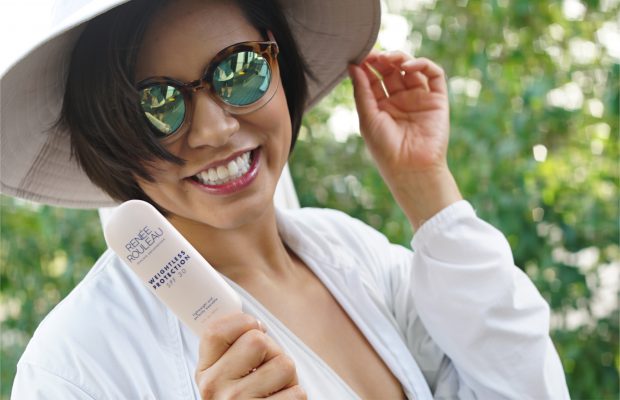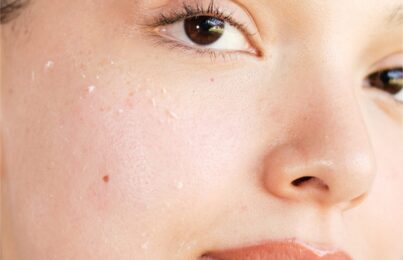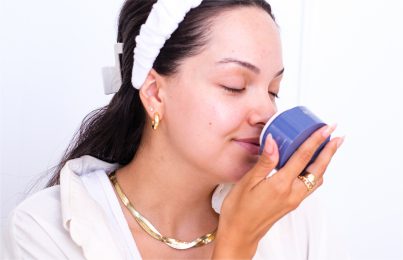Unlike most other skincare products, which are considered cosmetics, sunscreen is classified as a drug by the FDA. This means that before a sunscreen ever hits your shelf, it undergoes rigorous testing to ensure the final product does exactly what the label claims—that is, protects your skin from harmful UV rays.
Of course, testing something in a lab and using it out in the real world are two different things. While we can’t recreate the circumstances under which our sunscreen was tested, we can make sure we’re doing as little as possible to interfere with our sun protection. Sunscreen is your number one defense when it comes to protecting the skin against premature aging and skin cancer, and proper application is everything.
Keep reading to learn five common application mistakes that could be making your sunscreen less effective.
5 Sunscreen Mistakes
1. Mixing Your Sunscreen With Other Products
Out of all the common sunscreen mistakes, this is probably the worst one you can make. When sunscreen comes out of the tube, you’re getting the exact formula that’s been tested to determine SPF (remember SPF, or Sun Protection Factor, is a measurement of how well a sunscreen will protect your skin against harmful UV rays). The moment you mix that sunscreen with another product, you’re altering a carefully crafted formula and can no longer guarantee full protection.
Instead of mixing your sunscreen with other skincare products, like serum or moisturizer, layer one product on at a time (learn more about why I’m not a fan of mixing or “cocktailing” skincare products in general). And remember, a generous layer of sunscreen should always be your final application in the morning!
Btw, here’s how much sunscreen you should be applying.
2. Applying Face Oil in the Morning
The popularity of face oils has skyrocketed over the past few years thanks to their ability to impart a luminous glow to the skin almost instantaneously. However, face oil and sunscreen aren’t the best match.
While there aren’t any conclusive studies showing that oils interfere with sunscreen, the concern is that they may break it down and make it less effective. This makes sense if you think about the fact that your skin’s natural oils eat away at your skincare products throughout the day, or that oil cleansers are specifically designed to break down products like sunscreen.
I know face oils can have a beautiful effect, but trust me when I say this short-term glow isn’t worth potential long-term sun damage to your skin. If it’s a dewy finish you’re after, look for a sunscreen that supports this instead. Plenty of sunscreens are now formulated in hydrating bases, some of which even include oils! This way you can rest easy knowing your sunscreen has been proven stable and effective, even with the addition of glow-enhancing ingredients.
Don’t worry, this doesn’t mean you have to forgo oils in your routine altogether (I personally love a good face oil). Just save them for nighttime and make sure you’re applying them correctly.
3. Layering Too Many Products Underneath Your Sunscreen
Another common mistake I see is that people layer on product after product before finally getting to their sunscreen. At the end of the day, your skin can only absorb so much. At a certain point, you’re just wasting money by applying tons of serums or dousing your skin with moisturizer. What’s worse is that you risk creating a barrier between your skin and your sunscreen, in which case your sunscreen may not be able to properly coat the skin cells.
To avoid this, I recommend skipping the 10-step morning routine. Instead, keep things simple. Use a cleanser, alcohol-free toner, antioxidant serum, and sunscreen, in that order. (Learn more about how to build the perfect morning skincare routine). If you’re concerned about getting enough moisture, there are a few ways to maximize hydration with this routine:
- Make sure your cleanser is gentle and sulfate-free so it doesn’t strip your skin.
- Use an essence-like toner that’s infused with hydrating ingredients to plump the skin.
- Look for a vitamin C serum that has the texture of a light lotion.
Finally, I suggest using a lotion- or cream-based sunscreen that can double as a moisturizer for your skin type. This will eliminate the need for an A.M. moisturizer and remove one more layer between your skin and your sunscreen. For those with oily or acne-prone skin, the Weightless Protection SPF 30 is a great option.
4. Using a Face Mist After You’ve Applied Sunscreen
When face mists first started to come out, I wasn’t a huge fan. Most of them were basically just water and didn’t include any ingredients that would truly help hydrate the skin. Fast forward to today, and there are a lot of well-formulated mists that include humectants to help bind moisture to the skin.
The problem is this: most people mist their skin at the end of their routine. Or, they mist their skin throughout the day. This is a sunscreen mistake because you’re potentially diluting and messing with your sun protection. It also won’t do much to hydrate your skin. While the humectant ingredients found in face mists are great, they need to be sealed with a moisturizer to be most effective.
If you have a face mist you love using, I suggest spritzing it after you cleanse as the “toner” step in your routine. This way when you follow with your serum and moisturizing SPF, you’ll be sealing in all that skin goodness.
5. Not Letting Your Sunscreen Dry Before Applying Makeup
The good news about most modern sunscreen formulas is that they’re really stable once they’re dry. However, when you add something like makeup on top before your sunscreen has had a chance to dry, you risk diluting and interfering with the formula. Since makeup application usually involves a lot of dabbing, rubbing, and brushing, you can also end up wiping away some of that sunscreen you so painstakingly applied!
The solution is simple. Wait until your sunscreen is completely dry before going in with makeup. Did you know I actually believe wearing makeup every day is good for your skin? While it should never be used in place of sunscreen, the iron oxides found in most foundations add an extra layer of protection. Think of it as an insurance policy!
There you have it! These are the most common sunscreen mistakes I see people make. If you make any of these, I hope this post taught you something new about how to get the best possible protection out of your sunscreen.
Next, learn about the difference between chemical and physical sunscreens.
Celebrity Esthetician & Skincare Expert
As an esthetician trained in cosmetic chemistry, Renée Rouleau has spent 35 years researching skin, educating her audience, and building an award-winning line of products. Her hands-on experience as an esthetician and trusted skin care expert has created a real-world solution — products that are formulated for nine different types of skin so your face will get exactly what it needs to look and feel its best. Trusted by celebrities, editors, bloggers, and skincare obsessives around the globe, her vast real-world knowledge and constant research are why Marie Claire calls her “the most passionate skin practitioner we know.”



